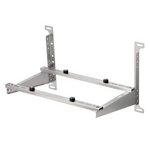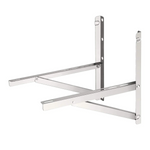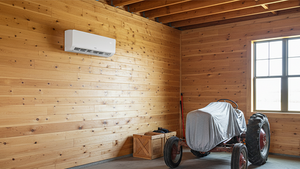3 Steps to Selecting the Correct One

You’ve started to notice musty smells around your house, or maybe spots of mold. It seems like humidity has reached your door and now you need to get rid of it. You know that a good dehumidifier can solve your problem and bring quality back to your life, but there are different sizes and you don’t know which one is best for you. To obtain quality results, it is important that you select the correct one. So, how to make the right selection?
It’s quite easy!
Dehumidifier sizes are measured according to their capacity in pints. This is the amount of water that they can collect within a 24 hour period under determined rating conditions.
Very recently, the testing standards were revised, so currently in the U.S. market you will find both dehumidifiers tested at 2012 DOE Standard and at 2019 DOE Standard. (As the measure is very recent, many of the 2012 DOE dehumidifiers you'll find around were actually produced in 2019, so don't think they were made back in 2012).
This is important to know because a 2019 DOE 50 Pint Dehumidifier and a 2012 DOE 70 Pint Dehumidifier are very similar. They will collect almost the same amount of water if they are tested under the same room conditions. One of the main differences between them is basically a change in the room conditions used for the tests.
So, the correct capacity will depend mostly upon three factors:
- Area of the room.
- The humidity of the room.
- DOE standard of the dehumidifier.
To make a decision, follow these steps:
Step 1: Measure the area of your room
How to measure it:
- Measure the width. Width = W (feet)
- Measure the length. Length= L (feet)
- Now calculate the Room Area. Room Area = A = W x L (square feet)

If the width of your room is 30ft and the length is 40ft, the area of your room will be:
A = W x L = 30ft x 40ft = 1,200 square feet
Step 2: Measure the humidity of the room
There are two ways to measure the humidity of a room:
1. Using a hygrometer which will show you the exact relative humidity inside your room. There are analog hygrometers as well as digital hygrometers.

- DAMP: Occasionally damp space with a musty smell.
- VERY DAMP: Moist space with some smells and damp stains. Always damp and musty.
- VERY WET: Sometimes has visible condensation.
- EXTREMELY WET: Always has visible condensation.
You’re ready to select the correct dehumidifier for you and your family!
Step 3: Identify the capacity
Now that you know the size of the room and the humidity level, you can select the correct dehumidifier to meet your needs. You'll need to know if the dehumidifier you're looking at is 2019 DOE Standard or 2012 DOE Standard to make your selection. Please check the two tables below:
Table 1 - 2012 DOE Standard. Dehumidifier capacity selection according to space size and humidity.

Table 2 - 2019 DOE Standard. Dehumidifier capacity selection according to space size and humidity.

Are you ready to get yours now? Shop now
Confused about the DOE Standard?
Check out our blog post What's the deal with DOE?
Do you have any additional questions? Feel free to contact our customer service team at support@tosotdirect.com.
Use information at your own risk: The information presented is intended for educational purposes only and is not intended to be a substitute for professional advice, diagnosis or treatment. Never disregard professional medical or home improvement advice. The information and suggestions should be discussed with a professional. You are responsible for independently verifying the information if you intend to rely upon or use it in any way. You use all information at your own risk.








7 comments
Hi Ralph!
This can be that it’s on defrost mode (if the air is cool), otherwise, it is just trying to get a few degrees below the target humidity setting.
I just bought the 70 pint dehumidifier for my basement. Seems to be working great. Question, does the fan continuously run? The fan on my unit has not shut off even when it has reached the desired humidity level. Thx Ralph
Can I just use one dehumidifier for the entire apartment?
Hi Sylvia! Our dehumidifiers are made in China under the best quality standards.
Hi Sharon!
The main difference between a dehumidifier and a humidifier is that a dehumidifier removes excess humidity from the air, while a humidifier does the opposite (it adds moisture).
You can check indoor relative humidity levels in your space with a hygrometer. These can change from one season to another.
Healthy levels are between 30% and 55%:
- If they’re below 30% you’ll need a humidifier.
- If they’re above 55% you’ll need a dehumidifier. By removing excess moisture from the air, dehumidifiers can help you prevent mold from growing.
You can read at our post “How do Dehumidifiers Work” here: https://tosotdirect.com/blogs/life-well-lived/how-does-a-dehumidifier-work.
Does this answer your question?